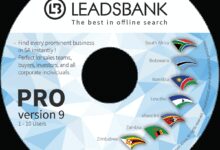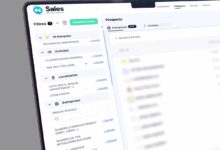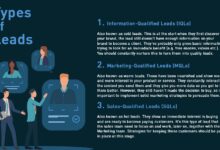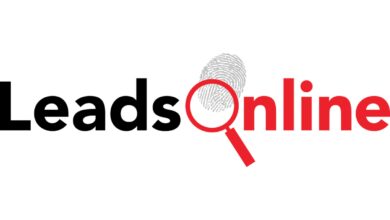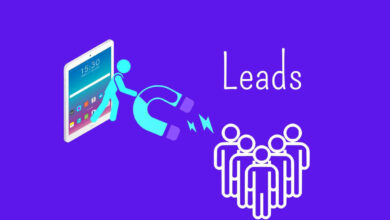Leads: 7 Powerful Strategies to Generate High-Quality Leads Fast
Ever wonder why some businesses grow like wildfire while others barely spark? It often comes down to one thing: leads. Not just any leads—high-quality, actionable leads that convert. In this deep dive, we’ll uncover what leads really are, how to generate them, and why they’re the lifeblood of modern business growth.
What Are Leads and Why They Matter

At the heart of every successful sales funnel lies a simple yet powerful concept: the lead. A lead is any individual or organization that has shown interest in your product or service. This interest could come from filling out a form, downloading a guide, subscribing to a newsletter, or even engaging with your content on social media.
Defining a Lead in Modern Marketing
In today’s digital-first world, a lead isn’t just a name and email. It’s a potential relationship waiting to be nurtured. According to HubSpot, a lead is “a person who could become a customer based on their interest in your company’s product or service.” This definition emphasizes intent—someone who has taken a deliberate action indicating interest.
- A lead shows intent through actions like form submissions or content downloads.
- Not all leads are equal—quality matters more than quantity.
- Leads can originate from various channels: social media, search engines, referrals, or events.
“A lead is not a sale, but it’s the first step toward one.” — Neil Patel
Types of Leads: From Cold to Hot
Understanding the different types of leads helps businesses tailor their follow-up strategies. Leads are typically categorized based on their level of engagement and readiness to buy.
- Cold Leads: Individuals with minimal interaction. They may have visited your site but haven’t taken any significant action.
- Warm Leads: These leads have engaged with your brand—downloaded a whitepaper, attended a webinar, or subscribed to your email list.
- Hot Leads: Highly engaged prospects actively seeking a solution. They may have requested a demo, contacted sales, or added a product to their cart.
Segmenting leads by temperature allows for more personalized and effective nurturing. For example, hot leads should be prioritized for immediate follow-up by sales teams, while cold leads benefit from long-term nurturing via email campaigns and content marketing.
How Leads Fuel Business Growth
Leads are more than just contacts—they’re the foundation of revenue generation. Without a steady stream of leads, even the best products can fail to gain traction. Every sale starts with a lead, making lead generation a critical function across marketing and sales teams.
The Sales Funnel and Lead Conversion
The journey from lead to customer follows a structured path known as the sales funnel. This model visualizes the stages a prospect goes through before making a purchase. The funnel typically includes awareness, interest, decision, and action phases.
- Awareness: The prospect discovers your brand through ads, SEO, or social media.
- Interest: They engage with your content—reading blogs, watching videos, or downloading resources.
- Decision: They compare your offering with competitors, possibly requesting a demo or quote.
- Action: They convert into paying customers.
Each stage requires targeted strategies to move leads forward. For instance, educational content works well in the awareness and interest stages, while personalized offers and testimonials are effective in the decision phase.
Measuring Lead Quality and ROI
Not all leads are created equal. A high volume of low-quality leads can waste sales resources and reduce conversion rates. That’s why measuring lead quality is essential. Key metrics include:
- Lead-to-Customer Conversion Rate: The percentage of leads that become paying customers.
- Cost Per Lead (CPL): How much you spend to acquire each lead.
- Customer Lifetime Value (CLV): The total revenue a customer generates over time.
- Lead Scoring: A system that assigns points based on behavior and demographics to prioritize follow-up.
According to a study by Marketo, companies that implement lead scoring see a 77% increase in lead generation ROI. This shows that focusing on quality over quantity pays off.
Top 7 Proven Strategies to Generate Leads
Generating high-quality leads doesn’t happen by accident. It requires a strategic approach combining content, technology, and data. Below are seven of the most effective methods used by top-performing businesses.
1. Content Marketing That Converts
Content is still king when it comes to attracting and converting leads. By creating valuable, relevant content, businesses can draw in prospects at every stage of the buyer’s journey.
- Blog posts targeting long-tail keywords attract organic traffic.
- E-books and whitepapers serve as lead magnets when gated behind a form.
- Video content increases engagement and time on site, improving lead capture opportunities.
For example, a SaaS company might offer a free guide on “10 Ways to Automate Your Workflow” in exchange for an email address. This not only captures leads but positions the brand as an authority.
Learn more about effective content strategies at HubSpot’s Content Marketing Guide.
2. Search Engine Optimization (SEO)
SEO is one of the most cost-effective ways to generate consistent, high-intent leads. When your website ranks for relevant keywords, you attract visitors who are actively searching for solutions you offer.
- Optimize on-page elements like titles, meta descriptions, and headers.
- Create pillar content and topic clusters to dominate search results.
- Build backlinks from authoritative sites to boost domain authority.
A well-optimized landing page targeting “best CRM for small business” can attract hundreds of qualified leads monthly—without paid advertising.
Check out Moz’s Beginner’s Guide to SEO for a comprehensive overview.
3. Paid Advertising (PPC and Social Ads)
When you need fast results, paid advertising delivers. Platforms like Google Ads and Facebook Ads allow precise targeting to reach ideal customers.
- Google Search Ads capture high-intent users typing in relevant queries.
- Facebook and Instagram Ads use demographic and behavioral data to target niche audiences.
- Retargeting ads re-engage visitors who didn’t convert on their first visit.
A well-crafted ad campaign can generate thousands of leads in weeks. However, it’s crucial to optimize landing pages and conversion funnels to maximize ROI.
4. Email Marketing Campaigns
Email remains one of the highest ROI marketing channels. According to the Data & Marketing Association, email delivers $42 for every $1 spent.
- Build your list with lead magnets like free trials or checklists.
- Use automation to send personalized drip campaigns based on user behavior.
- Segment your audience to deliver relevant content and offers.
For example, a fitness brand might send a 5-day email course on “Getting Started with Home Workouts” to new subscribers, gradually introducing their products.
Explore Mailchimp’s Email Marketing Guide for best practices.
5. Social Media Engagement
Social platforms aren’t just for brand awareness—they’re powerful lead generation tools when used strategically.
- LinkedIn is ideal for B2B lead generation through content sharing and direct outreach.
- Instagram and TikTok allow creative lead capture via swipe-up links and shoppable posts.
- Facebook Groups foster community and trust, making members more receptive to offers.
A real estate agent might host a live Q&A on Facebook about “First-Time Home Buying Tips,” then follow up with attendees via direct message to schedule consultations.
6. Webinars and Live Events
Webinars combine education and sales, making them one of the most effective lead generation tools. Attendees self-identify as interested, making them warmer leads.
- Choose topics that solve specific pain points for your audience.
- Promote the event through email, social media, and paid ads.
- Follow up with recordings and special offers for attendees.
According to ON24, 60% of webinar attendees are willing to share contact information, and 20% convert into sales-qualified leads.
Discover how to host high-converting webinars at ON24’s Webinar Best Practices.
7. Referral and Affiliate Programs
People trust recommendations from friends and experts. Referral and affiliate programs turn satisfied customers and influencers into lead-generating partners.
- Offer incentives like discounts or cash rewards for successful referrals.
- Provide affiliates with marketing kits, tracking links, and commission structures.
- Use platforms like ReferralCandy or PartnerStack to automate the process.
A software company might offer existing users a $50 credit for every new customer they refer, creating a win-win scenario.
Tools and Technologies to Capture and Manage Leads
Generating leads is only half the battle. You also need the right tools to capture, track, and nurture them effectively.
Customer Relationship Management (CRM) Systems
A CRM is the backbone of lead management. It stores lead data, tracks interactions, and automates follow-ups.
- Salesforce offers robust features for enterprise-level lead tracking.
- HubSpot CRM provides a free, user-friendly option with powerful automation.
- Zoho CRM is ideal for small to mid-sized businesses looking for affordability and scalability.
Integrating your website forms, email campaigns, and ads with a CRM ensures no lead falls through the cracks.
Lead Capture Tools and Forms
The easier it is to become a lead, the more leads you’ll generate. Optimized lead capture tools make this process seamless.
- Pop-up forms with exit-intent technology can boost conversions by up to 50%.
- Inline forms embedded in blog posts reduce friction.
- Multi-step forms improve completion rates by breaking the process into smaller steps.
Tools like OptinMonster and Leadpages specialize in high-converting lead capture forms and landing pages.
Marketing Automation Platforms
Automation allows you to scale lead nurturing without increasing workload. These platforms deliver the right message at the right time.
- ActiveCampaign excels in behavioral-based email automation.
- Marketo is powerful for B2B lead nurturing at scale.
- Klaviyo focuses on e-commerce, using purchase history to personalize lead follow-ups.
Automation ensures consistent communication, increasing the chances of conversion.
Lead Nurturing: Turning Prospects into Paying Customers
Only 2% of leads convert on first contact, according to InsideSales. This is why lead nurturing is critical. It’s the process of building relationships with prospects over time, guiding them toward a purchase decision.
The Role of Drip Campaigns
Drip campaigns are automated email sequences that deliver value over time. They keep your brand top-of-mind while educating the lead.
- Day 1: Welcome email with a thank you and resource link.
- Day 3: Case study showing how a customer solved a similar problem.
- Day 7: Invitation to a free consultation or demo.
These sequences build trust and move leads closer to conversion without aggressive selling.
Personalization and Behavioral Triggers
Generic messages get ignored. Personalization increases open rates, click-through rates, and conversions.
- Use the lead’s name and reference their interests.
- Trigger emails based on behavior—like abandoning a cart or visiting a pricing page.
- Recommend products or content based on past interactions.
For example, if a lead downloads a guide on “Email Marketing Tips,” follow up with a case study on email campaign ROI.
Scoring and Qualifying Leads
Not every lead deserves the same attention. Lead scoring helps prioritize who gets immediate follow-up.
- Assign points for actions: +10 for downloading a pricing sheet, +25 for requesting a demo.
- Deduct points for inactivity: -5 after 30 days of no engagement.
- Set thresholds: Leads with 50+ points are sales-ready.
This ensures your sales team focuses on the hottest leads, improving efficiency and close rates.
Common Mistakes in Lead Generation (And How to Avoid Them)
Even experienced marketers make mistakes that hurt lead quality and conversion rates. Recognizing these pitfalls is the first step to avoiding them.
Chasing Quantity Over Quality
It’s tempting to celebrate high lead numbers, but if they don’t convert, they’re just noise. Focusing on quality means targeting the right audience with the right message.
- Define your ideal customer profile (ICP) clearly.
- Use qualifying questions in forms to filter out unqualified leads.
- Align marketing and sales teams on what constitutes a “good” lead.
“Better to have 100 people who love you than 1 million who don’t.” — Seth Godin
Ignoring Lead Follow-Up
Timing is everything. Research by Harvard Business Review found that the odds of qualifying a lead drop by 10x if the follow-up takes longer than 5 minutes.
- Automate initial responses with instant email or SMS.
- Set up alerts for sales teams when a high-intent action occurs.
- Use chatbots to engage visitors in real-time.
Fast follow-up shows responsiveness and increases trust.
Poor Alignment Between Marketing and Sales
When marketing and sales teams work in silos, leads suffer. Misalignment leads to inconsistent messaging, delayed follow-ups, and lost opportunities.
- Hold regular sync meetings to review lead performance.
- Use shared KPIs like conversion rate and customer acquisition cost.
- Implement a Service Level Agreement (SLA) defining how leads are passed and followed up.
According to Salesforce, companies with strong sales and marketing alignment achieve 36% higher customer retention and 38% higher sales win rates.
The Future of Leads: Trends to Watch
The way we generate and manage leads is evolving. New technologies and consumer behaviors are reshaping the landscape.
AI and Predictive Lead Scoring
Artificial intelligence is revolutionizing lead management. AI-powered tools analyze vast amounts of data to predict which leads are most likely to convert.
- Tools like Infer and Lattice Engines use machine learning to score leads based on historical data.
- AI chatbots qualify leads in real-time by asking smart questions.
- Predictive analytics help prioritize outreach and allocate resources efficiently.
These technologies reduce guesswork and increase conversion accuracy.
Privacy-First Lead Generation
With increasing regulations like GDPR and CCPA, and the deprecation of third-party cookies, businesses must adapt to a privacy-first world.
- Focus on first-party data collection through value exchanges.
- Be transparent about data usage and obtain explicit consent.
- Invest in zero-party data—information customers willingly share.
Trust is becoming a competitive advantage. Brands that respect privacy will win more leads in the long run.
Conversational Marketing and Chatbots
Today’s buyers want instant answers. Conversational marketing meets them where they are—on websites, messaging apps, and social platforms.
- Chatbots qualify leads 24/7, even outside business hours.
- Live chat increases conversion rates by up to 20%.
- WhatsApp and Messenger bots deliver personalized offers at scale.
Companies like Drift have built entire platforms around conversational sales, proving its effectiveness.
What is a lead in marketing?
A lead in marketing is a person or organization that has shown interest in your product or service by providing contact information or engaging with your brand. This interest makes them a potential customer worth nurturing.
How do you generate high-quality leads?
You generate high-quality leads by targeting the right audience with valuable content, using lead magnets, optimizing for SEO, leveraging paid ads, and nurturing prospects through email and automation. Quality over quantity is key.
What’s the difference between a lead and a prospect?
A lead is anyone who has shown initial interest, while a prospect is a lead that has been qualified as having a genuine need, budget, and authority to make a purchase.
How fast should you follow up with a lead?
According to research, the best time to follow up is within 5 minutes of lead capture. Delaying beyond an hour drastically reduces the chances of conversion.
What tools are best for managing leads?
Top tools include CRM platforms like HubSpot, Salesforce, and Zoho; lead capture tools like OptinMonster; and marketing automation systems like ActiveCampaign and Marketo.
Leads are the foundation of every successful business. From defining what a lead is to mastering the art of generation, nurturing, and conversion, this guide has covered the full spectrum. The key takeaway? Focus on quality, use the right strategies, and leverage technology to scale. Whether you’re a startup or an enterprise, a smart lead strategy can transform your growth trajectory. Start implementing these insights today and watch your pipeline thrive.
Further Reading:
